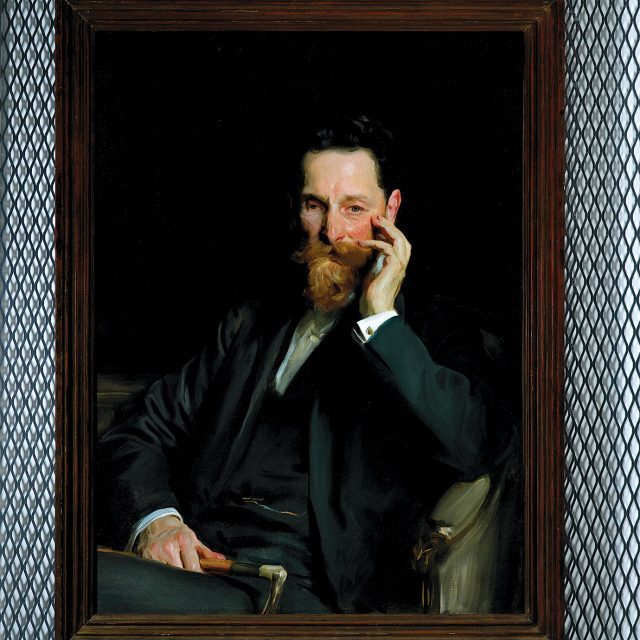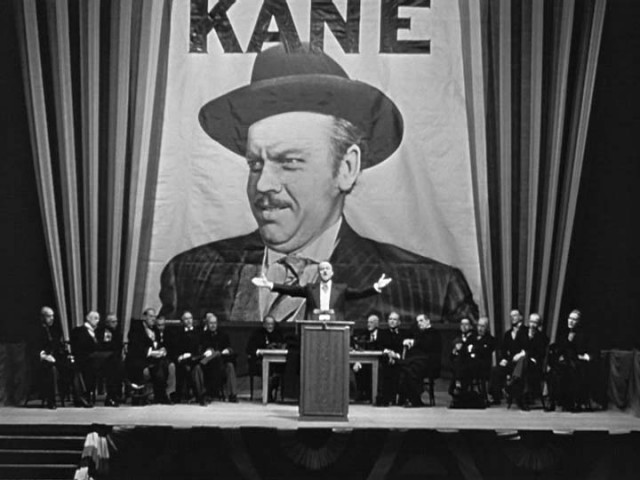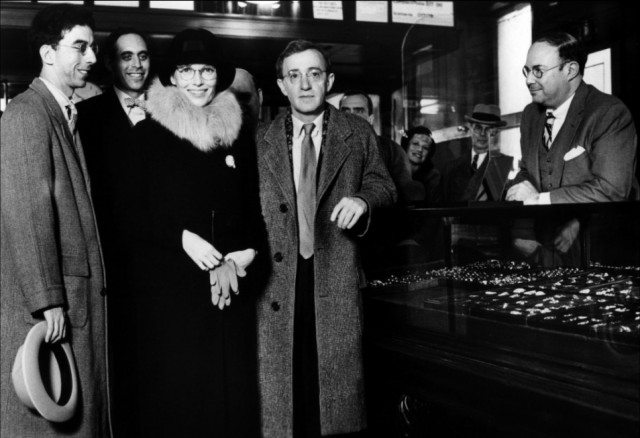
The life and times of Joseph Pulitzer are explored in Oren Rudavsky documentary
JOSEPH PULITZER: VOICE OF THE PEOPLE (Oren Rudavsky, 2018)
Quad Cinema
34 West 13th St. between Fifth & Sixth Aves.
Opens March 1
212-255-2243
quadcinema.com
www.josephpulitzerfilm.com
 “It is not enough to refrain from publishing fake news . . . accuracy is to a newspaper what virtue is to a woman,” Joseph Pulitzer, voiced by a thickly Hungarian-accented Liev Schreiber, says in Oren Rudavsky’s Joseph Pulitzer: Voice of the People, opening March 1 at the Quad. Made for PBS’s American Masters series, the documentary, narrated by Adam Driver, gets off to a slow start, with numerous talking heads, wearisome reenactments, and modern-day B-roll shots. There’s some fascinating information about Pulitzer, who was born in Hungary in 1847, came to America penniless to fight in the Civil War, and eventually built a publishing empire that made him extremely wealthy even as he still fought aggressively for the poor, the disenfranchised, the overlooked, the underrepresented. Of course, Rudavsky (A Life Apart: Hasidism in America) — who directed the film, wrote it with Robert Seidman and editor Ramon Rivera Moret, and produced it with Seidman and Andrea Miller — had limited pictorial resources for the first half of Pulitzer’s life, before photography became more mainstream and before Pulitzer bought and ran the St. Louis Post-Dispatch and the New York World.
“It is not enough to refrain from publishing fake news . . . accuracy is to a newspaper what virtue is to a woman,” Joseph Pulitzer, voiced by a thickly Hungarian-accented Liev Schreiber, says in Oren Rudavsky’s Joseph Pulitzer: Voice of the People, opening March 1 at the Quad. Made for PBS’s American Masters series, the documentary, narrated by Adam Driver, gets off to a slow start, with numerous talking heads, wearisome reenactments, and modern-day B-roll shots. There’s some fascinating information about Pulitzer, who was born in Hungary in 1847, came to America penniless to fight in the Civil War, and eventually built a publishing empire that made him extremely wealthy even as he still fought aggressively for the poor, the disenfranchised, the overlooked, the underrepresented. Of course, Rudavsky (A Life Apart: Hasidism in America) — who directed the film, wrote it with Robert Seidman and editor Ramon Rivera Moret, and produced it with Seidman and Andrea Miller — had limited pictorial resources for the first half of Pulitzer’s life, before photography became more mainstream and before Pulitzer bought and ran the St. Louis Post-Dispatch and the New York World.
Thus, the second half of the film is significantly better, as Rudavsky explores Pulitzer’s battles with William Randolph Hearst, which led to the concept of “yellow journalism,” then with President Theodore Roosevelt over possible corruption involving the Panama Canal deal, and finally with his health, as he loses his eyesight but continues to run his paper. The fight with Hearst over circulation numbers and who can get the most sensationalistic stories first is downright exciting, evoking the current 24/7 news cycle on social media, while elements of the Roosevelt scandal are echoed today by President Donald Trump’s relationship with the press. Among those celebrating Pulitzer, who was a firm believer in justice and was not afraid to stand up and defend it loudly, is novelist Nicholson Baker, who acquired and preserved many issues of the World and reviews several of them on camera, turning the pages as if examining priceless treasures, which in many ways they are. The voice cast also features Lauren Ambrose as Kate Davis, Rachel Brosnahan as Nellie Bly, Hugh Dancy as Alleyne Ireland, Billy Magnussen as Hearst, and Tim Blake Nelson as Roosevelt. Rudavsky will be at the Quad for Q&As following the 6:55 screenings March 1 and 2 and after the 3:05 show March 3.

 Film Forum is ringing in 2015 with the greatest American movie ever made, the epic Citizen Kane, kicking off a massive centennial celebration of the birth of its creator, the rather iconoclastic writer, director, producer, actor, and wine spokesman Orson Welles. In 1941, a young, brash, determined Welles shocked Hollywood with a masterpiece unlike anything seen before or since — a beautifully woven complex narrative with a stunning visual style (compliments of director of photography Gregg Toland) and a fabulous cast of veterans from his Mercury radio days, including Everett Sloane, Joseph Cotten, Ray Collins, Paul Stewart, and Agnes Moorehead. Each moment in the film is unforgettable, not a word or shot out of place as Welles details the rise and fall of a self-obsessed media mogul. The film is prophetic in many ways; at one point Kane utters, “The news goes on for twenty-four hours a day,” foreseeing today’s 24/7 news overload. And it doesn’t matter if you’ve never seen it and you know what Rosebud refers to; the film is about a whole lot more than just that minor mystery. Like every film the Wisconsin-born Welles made, Citizen Kane was fraught with controversy, not the least of which was a very unhappy William Randolph Hearst seeking to destroy the negative of a film he thought ridiculed him. Kane won only one Oscar, for writing — which also resulted in controversy when Herman J. Mankiewicz claimed that he was the primary scribe, not Welles. The film lost the Academy Award for Best Picture to John Ford’s How Green Was My Valley, but it has topped nearly every greatest-films-of-all-time list ever since.
Film Forum is ringing in 2015 with the greatest American movie ever made, the epic Citizen Kane, kicking off a massive centennial celebration of the birth of its creator, the rather iconoclastic writer, director, producer, actor, and wine spokesman Orson Welles. In 1941, a young, brash, determined Welles shocked Hollywood with a masterpiece unlike anything seen before or since — a beautifully woven complex narrative with a stunning visual style (compliments of director of photography Gregg Toland) and a fabulous cast of veterans from his Mercury radio days, including Everett Sloane, Joseph Cotten, Ray Collins, Paul Stewart, and Agnes Moorehead. Each moment in the film is unforgettable, not a word or shot out of place as Welles details the rise and fall of a self-obsessed media mogul. The film is prophetic in many ways; at one point Kane utters, “The news goes on for twenty-four hours a day,” foreseeing today’s 24/7 news overload. And it doesn’t matter if you’ve never seen it and you know what Rosebud refers to; the film is about a whole lot more than just that minor mystery. Like every film the Wisconsin-born Welles made, Citizen Kane was fraught with controversy, not the least of which was a very unhappy William Randolph Hearst seeking to destroy the negative of a film he thought ridiculed him. Kane won only one Oscar, for writing — which also resulted in controversy when Herman J. Mankiewicz claimed that he was the primary scribe, not Welles. The film lost the Academy Award for Best Picture to John Ford’s How Green Was My Valley, but it has topped nearly every greatest-films-of-all-time list ever since.

